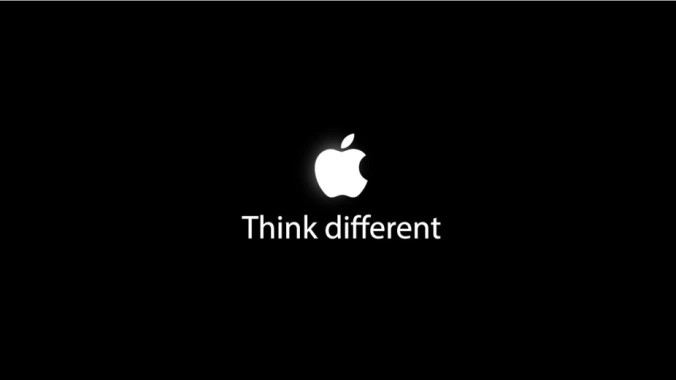Christmas is officially upon us...
Ashton and I are flying out to Park City, Utah today, so I'm hoping for a real white Christmas!
Before all that though, here are 5 nuggets filled with sales and marketing ideas and a little Christmas cheer...
1. FBM EXPERT TIP:
Writing compelling copy is a critical element in driving clicks and conversions for your ads and offers.
In fact, many funnels consistently achieve results through the power of well-written copy alone.
So, what's the secret behind creating copy that truly converts?
George P shared three key strategies recently to elevate your copywriting game.
Here they are:
1. Go 110%:
Often, copywriters hold back on their enthusiasm to maintain a professional tone, but this restraint can lead to lackluster content. George advises to go all in – aim for 110% enthusiasm.
It might feel over the top, but to your audience, it comes across as engaging and dynamic, which can significantly boost your conversion rates.
2. Be transparent
It's rare that people will be honest about the limitations or the effort required with their product or service. Being open and honest about them is so refreshing, it adds a level of power to your copy.
Then, if you can frame these aspects as benefits, you'll take your sales copy to a whole new level. For example, there's a lot of work involved in your service that's why the results are better than anything else available.
3. Encourage immediate action
Don't fall into the trap of thinking that a low conversion rate means people aren't interested in your product. Many potential customers are interested; they just postpone taking action.
To overcome this, add a sense of urgency to your copy. This could be through limited-time offers, exclusive bonuses, or simplifying the action steps. The goal is to convert the 'I'll do it later' mindset into immediate action.
Mastering the art of copywriting is a journey. But, the payoff can be huge.
If you're looking to infuse your ads and funnels with compelling copy, George is your go-to expert.
If you're interested in transforming your content into a conversion powerhouse, send him a message here.
2. MARKETING TIP:
Whether you're launching a new business or rebranding an existing one, the steps to develop a strong brand identity can be the difference between blending in and standing out.
The good news is, it's not as difficult to develop a strong brand as you might imagine. Here are 4 things you need to focus on to stand out:
Define Your Brand Values
Establishing what your brand stands for is crucial. Craft a mission statement and set of core values that encapsulate your beliefs and objectives.
Remember, your products or services may be similar to competitors, but your core values are what set you apart, resonate with your audience, and give them a reason to choose you.
Develop a Consistent Brand Voice
Your brand's voice is how you communicate with your target audience. It should be consistent across all channels and align with your brand's personality.
Explore various tones and styles to find the one that best represents your brand, and ensure it's uniform in all your content, whether it's a blog post, social media update, or ad campaign.
Share Your Origin Story
People love stories, especially ones they can relate to. Share your brand's origin story, how you started, the challenges you faced, and what keeps you motivated. A genuine, relatable story can significantly boost your brand's appeal.
Craft a Memorable Name, Slogan, and Logo
Your brand name and slogan should be distinctive and easy to remember. They should encapsulate the essence of your brand and be versatile enough to fit different mediums, from your website header to social media bios.
When designing your logo, choose a colour palette and font style that visually communicates your brand's values and identity.
A great example of a business that has successfully implemented these four branding steps is obviously Apple.
Defined Brand Values:
Apple's brand is built on values like innovation, simplicity, and user-centric design. Their mission to create products that enrich people's lives has been a driving force behind their success, differentiating them from competitors.
Consistent Brand Voice:
Apple's brand voice is clear, concise, and focused on the user experience. This voice is consistent across all their marketing channels, product designs, and customer interactions, ensuring a cohesive and recognizable brand presence.
Narrating an Origin Story:
Apple’s origin story, with Steve Jobs and Steve Wozniak starting the company in a garage, is very well known. This narrative of humble beginnings and a vision to revolutionize technology resonates with customers, adding to the brand's appeal.
Memorable Name, Slogan, and Logo:
Apple’s name, simplistic yet iconic logo, and memorable slogans like “Think Different” effectively encapsulate the essence of the brand. The logo, name, and slogan are instantly recognizable and reflect the sleek, minimalist design ethos of the company.

3. TOP TIP FROM A FELLOW COMMUNITY MEMBER:
With the year coming to a close, it’s natural to look forward and begin setting goals or resolutions.
But, according to Kevin Bronander, to accomplish something worthwhile, you should reflect on the past before looking to the future.
Here are Kevin's four key steps to setting the right goals and making sure they happen:
Reflection
Comb through the things you've done this year, and capture the insights in one place.
Leverage all of the digital tools that you use on a daily basis. Review your calendar, reread your journal entries, and scroll through your social media accounts. Check out your photos, and even old texts.
As you move through the year, you will notice which events, people, and responsibilities you loved and want to do more of, and which ones you want to avoid.
Reflection like this helps you understand yourself and your reality better, and provides the foundation that you need to plan for the future.
Planning
Creating an effective plan starts with connecting where you are today with where you want to be in the future.
To create this clarity, ask yourself two questions five times:
- What you're pursuing
- What you need to do to get there
The first time you ask these two questions should be on an annual basis, so you can understand the big picture. With an understanding of the big picture, you can ask yourself the same questions four more times, drilling down the timeframe from annual to quarterly, then monthly, weekly, and daily.
What you need to do on a daily basis helps you reach where you need to be on a weekly basis, and what you need to do on a weekly basis helps you reach where you need to be on a monthly basis, and so on.
Breaking down ambitious plans into bite-sized chunks forces you to make incremental progress throughout the year!
Anchor Pursuit
An Anchor Pursuit is one habit or goal that serves as the skeletal system for everything else that you do.
It’s one thing you can commit to that will make everything else easier. It makes you feel good and moves you forward.
For some, it might be journaling or dinner with the family. For others, it might be meditation or therapy.
Exercise is a great example. It can be the thing that gets you out of bed in the morning, and gives you more energy to tackle the rest of the day.
An Anchor Pursuit gives you a chance to win the day by checking one thing off of your list. If you can do that one thing each day, you'll be transformed for the better by the end of the year.
Prompts for reflection
After reviewing the last 12 months, what is one thing you’d like to do more of, and one thing you’d like to do less of, in the upcoming year?
What are the actions you need to take on a quarterly, monthly, weekly, and daily basis to accomplish your biggest goal for the year?
What is your Anchor Pursuit for the upcoming year? How can you guarantee you will do this every day?
4. FUNNEL OF THE WEEK:
I was interviewing Mike Schmidt and AJ Rivera this week (the creators of the Funnel Hub concept) and I asked them if there were any funnel hubs that, to them, were a shining example of what a funnel hub should be.
One of their favourites (and one they had a hand in creating) is this one here.
It has all of the elements they feel a funnel hub should have in order to drive leads, provide information for potential customers, and improve your SEO.
Check it out here, hack what you like, and let me know your thoughts!
5. FOOD FOR THOUGHT:
"Marketing is no longer about the stuff that you make, but about the stories you tell."
– Seth Godin
That's it for this week! Have a great Christmas and hopefully I'll see you back here next Friday for the final newsletter of the year!
Lee
_01HJ6R3H2SDQMBR2D71Z2TJ008.png)
If you need me, I'll be
somewhere on these
slopes, hopefully still
on my skis!

